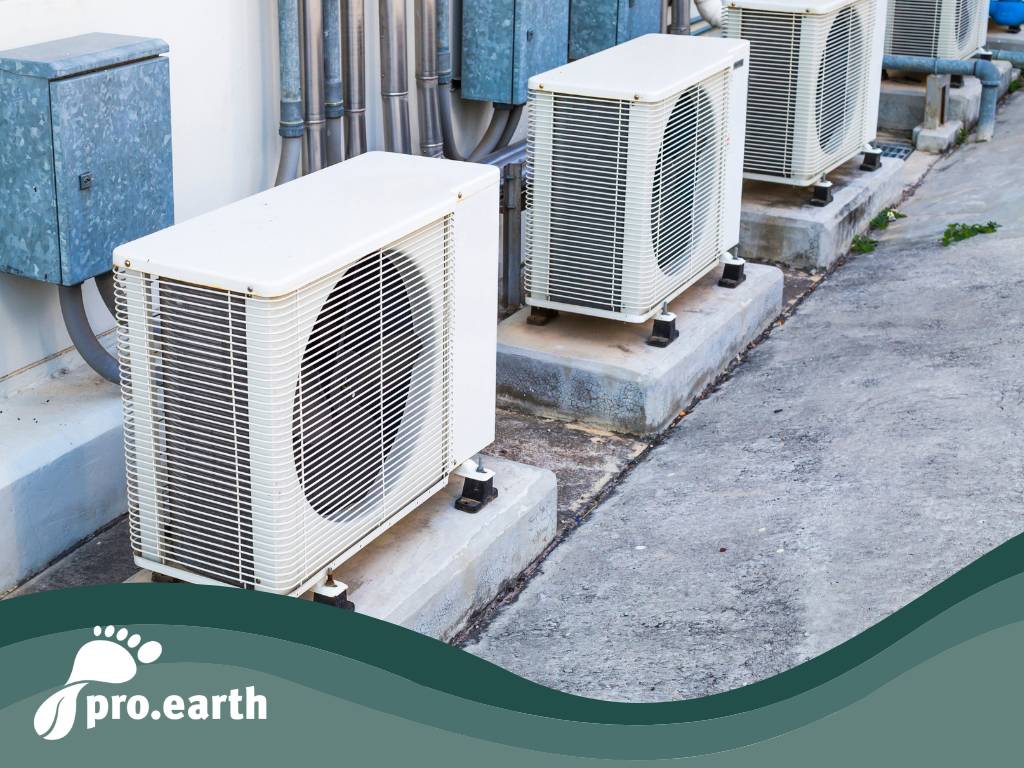The need for sustainable cooling is a blind spot

We can feel it ourselves. It's getting hotter. And our houses aren't really made for it. We know how to protect our buildings against the cold. But not against the heat. Ever larger areas of glass, a lack of external shading, no natural ventilation. And then we resort to air conditioning systems, which consume an enormous amount of energy and, while they cool us down inside, fuel the greenhouse effect outside. But now to the scientific part. A research team at Oxford University is working intensively on the question of cooling requirements in times of global warming, based on the scenario that global warming is not limited to 1.5 degrees Celsius, but reaches two degrees Celsius.
Countries most affected
The ten countries that will have the highest overall cooling demand in a 2.0ºC scenario are all in Africa, with Central Africa being the most affected.
"These conditions will further strain the continent's socio-economic development and energy grids... issues that require much additional research given the limited studies on this growing threat in the African context," says Dr. Khosla.
"It is also a clear indication that Africa is bearing the brunt of a problem it did not cause, which should further strengthen calls for climate justice and equity."
Increasing number of days with cooling requirements in northern regions
In Switzerland, the UK and Norway, the number of days requiring cooling measures (e.g. shutters, ventilation, fans or air conditioning) will increase the most globally if warming exceeds 1.5 ºC, according to the Oxford Martin Program on the Future of Cooling.
In Switzerland and the United Kingdom, the number of days with uncomfortably hot temperatures will increase by 30%, in Norway by 28% and in Austria by 25%. The researchers emphasize that this is a conservative estimate that does not take into account extreme events such as heat waves, which would add to this average increase.
8 of the 10 countries with the largest relative increase in uncomfortably hot days are expected to be in Northern Europe, with Canada and New Zealand completing the list.
"Extreme heat can lead to dehydration, heat exhaustion and even death, especially among vulnerable populations. It is a health and economic imperative that we prepare for more hot days."
"Dangerously unprepared"
The researchers believe that these countries are dangerously ill-prepared for this change. "Currently, sustainable cooling is barely mentioned in the UK's net zero strategy, for example," says co-author Dr. Radhika Khosla, Associate Professor at the Smith School of Enterprise and the Environment and Director of the Oxford Martin Programme on the Future of Cooling.
"We would make the world outside hotter to feel cooler inside."
Dr. Khosla
Dr. Khosla continues: "Without adequate measures to promote sustainable cooling, we are likely to see a sharp increase in the use of energy-guzzling systems such as air conditioning, which could further increase emissions and lead us into a vicious cycle of burning fossil fuels to make us feel cooler while the world gets hotter outside."
The research team predicts that energy demand for air conditioning is likely to triple by 2050, with ten new air conditioners expected to be sold every second for the next 30 years. This huge demand has the potential to drive up greenhouse gas emissions, further exacerbating the very problem that needs to be alleviated.
Houses are like greenhouses
Dr. Jesus Lizana, co-author of the study, explains: "If we adapt the built environment we live in, we don't need to increase air conditioning. But in countries like the UK, our buildings currently behave like greenhouses - no external solar shading in buildings, shuttered windows, no natural ventilation and no ceiling fans. Our buildings are only prepared for the cold seasons."
Conclusio
"Cooling demand must no longer be a blind spot in the sustainability debate," concludes Dr. Khosla. "By 2050, the energy demand for cooling could be as high as the total electricity generation of the US, EU and Japan combined in 2016. We need to focus now on how we can keep people cool in a sustainable way."






